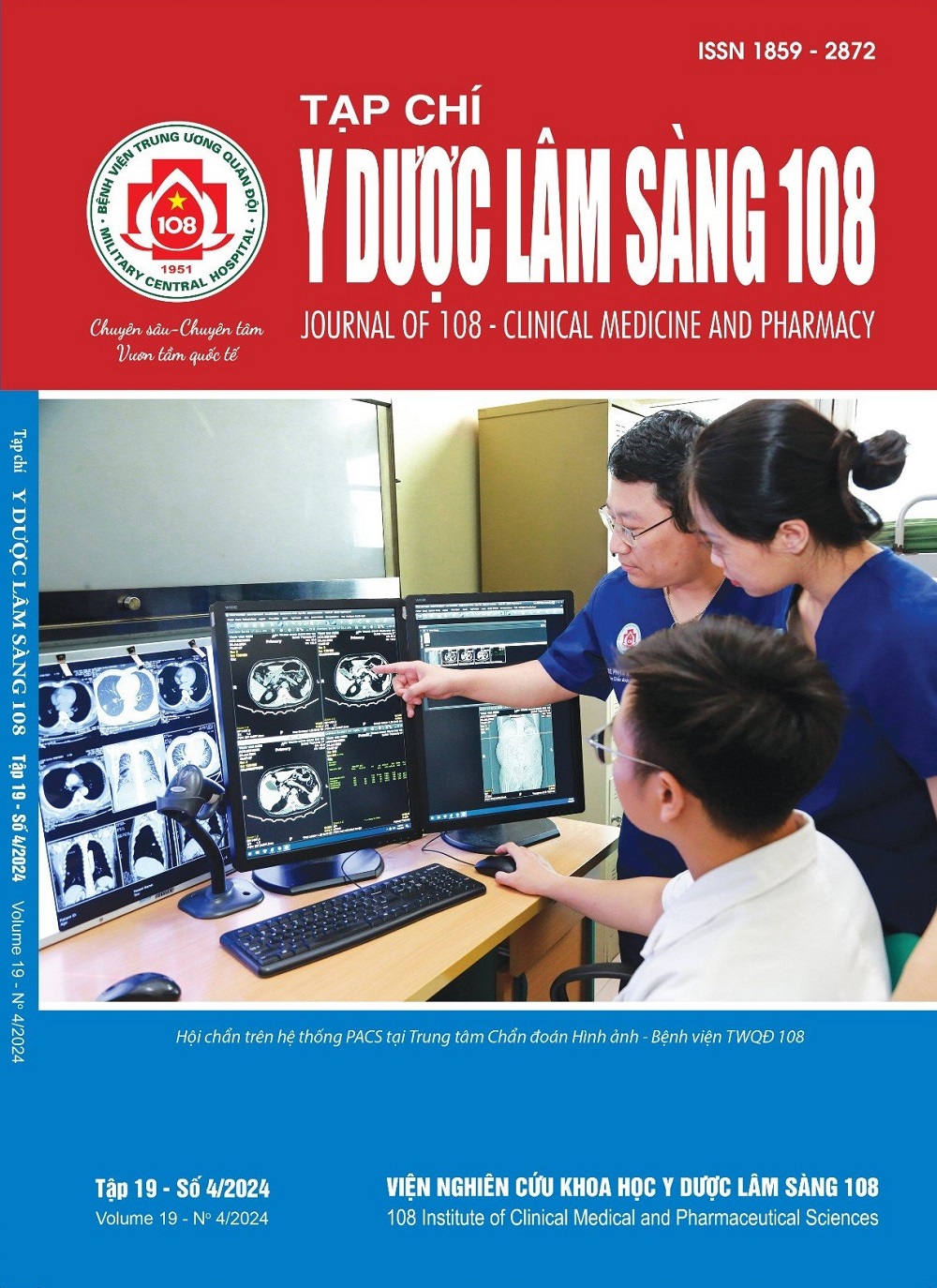Báo cáo trường hợp lâm sàng: Gây tê tuỷ sống chọn lọc phối hợp ngoài màng cứng để phẫu thuật và giảm đau sau mổ kết hợp cổ xương đùi trên bệnh nhân 109 tuổi
Main Article Content
Keywords
Kết hợp cổ xương đùi, gây tê ở bệnh nhân cao tuổi, giảm đau
Tóm tắt
Ngày nay tuổi thọ con người ngày càng tăng, tuy nhiên người có tuổi trên 100 không nhiều đặc biệt người 109 tuổi lại càng hiếm. Người cao tuổi thường có suy giảm chức năng các cơ quan trong cơ thể nên khi vô cảm và phẫu thuật cho người cao tuổi thường đối diện với nhiều nguy cơ. Lựa chọn phương pháp vô cảm phù hợp để giảm thiểu tai biến, biến chứng mà vẫn đảm bảo cho phẫu thuật, giúp bệnh nhân sớm hồi phục là mục tiêu đặt ra với các bác sỹ gây mê hồi sức. Báo cáo trường hợp lâm sàng: Gây tê tuỷ sống chọn lọc bằng bupivacaine tỷ trọng cao: 3,5mg với fentanyl: 20mcg để phẫu thuật, kết hợp với ngoài màng cứng giảm đau sau mổ kết hợp cổ xương đùi trên bệnh nhân 109 tuổi.
Article Details
Các tài liệu tham khảo
1. Pillai A, Eranki V (2011) Age related incidence and early outcomes of hip fractures: A prospective cohort study of 1177 patient. Journal of Orthopaedic Surgery and Research 6: 5.
2. Gokhan K, Yucel Bilgin, Ali Ersen (2015) Hip fractures in patients older than 75 years old: Retrospective analysis for prognostic factors. International Journal of Surgery 24: 101-104.
3. Lim BG, Lee IO (2020) Anesthetic management of geriatric patients. Korean Journal of Anesthesiol 73: 8-29.
4. Ben-David B, Frankel R, Arzumonov T, Marchevsky Y, Volpin G (2000) Minidose bupivacaine-fentanyl spinal anesthesia for surgical repair of hip fracture in the aged. Anesthesiology 92(1): 6-10.
5. Borghi B, Wulf H (2010) Advantages of unilateral spinal anaesthesia. Anasthesiol Intensivmed Notfallmed Schmerzther 45(3): 182-187.
6. Valanne JV, Korhonen AM, Jokela RM, Ravaska P, Korttila KK (2001) Selective Spinal Anesthesia: A comparison of Hyberbaric Bupivacaine 4mg versus 6mg for outpatient knee arthroscopy. Anesth Analg 93: 1377-1379.
7. Nguyễn Minh Lý (2013) Đánh giá hiệu quả của phương pháp gây tê tủy sống chọn lọc liều thấp trên BN cao tuổi. Tạp chí Y dược lâm sàng 108, tập 8, tr. 255-261.
8. Karpel E, Marszołek P, Pawlak B, Wach E (2009) Effectiveness and safety of unilateral spinal anaesthesia. Anestezjol Intens Ter 41(1): 33-36.
9. Thallaj A (2019) Combined PENG and LFCN blocks for postoperative analgesia in hip surgery-A case report. Saudi J Anaesth 13(4): 381-383.
10. Khodair S, Elshafey R (2014) Ultrasound guided lateral femoral cutaneous nerve block in meralgia paresthesia; review of 25 cases. Egyptian Journal of Radiology and Nuclear Medicine 45(4). DOI:10.1016/j.ejrnm.2014.06.002.
2. Gokhan K, Yucel Bilgin, Ali Ersen (2015) Hip fractures in patients older than 75 years old: Retrospective analysis for prognostic factors. International Journal of Surgery 24: 101-104.
3. Lim BG, Lee IO (2020) Anesthetic management of geriatric patients. Korean Journal of Anesthesiol 73: 8-29.
4. Ben-David B, Frankel R, Arzumonov T, Marchevsky Y, Volpin G (2000) Minidose bupivacaine-fentanyl spinal anesthesia for surgical repair of hip fracture in the aged. Anesthesiology 92(1): 6-10.
5. Borghi B, Wulf H (2010) Advantages of unilateral spinal anaesthesia. Anasthesiol Intensivmed Notfallmed Schmerzther 45(3): 182-187.
6. Valanne JV, Korhonen AM, Jokela RM, Ravaska P, Korttila KK (2001) Selective Spinal Anesthesia: A comparison of Hyberbaric Bupivacaine 4mg versus 6mg for outpatient knee arthroscopy. Anesth Analg 93: 1377-1379.
7. Nguyễn Minh Lý (2013) Đánh giá hiệu quả của phương pháp gây tê tủy sống chọn lọc liều thấp trên BN cao tuổi. Tạp chí Y dược lâm sàng 108, tập 8, tr. 255-261.
8. Karpel E, Marszołek P, Pawlak B, Wach E (2009) Effectiveness and safety of unilateral spinal anaesthesia. Anestezjol Intens Ter 41(1): 33-36.
9. Thallaj A (2019) Combined PENG and LFCN blocks for postoperative analgesia in hip surgery-A case report. Saudi J Anaesth 13(4): 381-383.
10. Khodair S, Elshafey R (2014) Ultrasound guided lateral femoral cutaneous nerve block in meralgia paresthesia; review of 25 cases. Egyptian Journal of Radiology and Nuclear Medicine 45(4). DOI:10.1016/j.ejrnm.2014.06.002.
 ISSN: 1859 - 2872
ISSN: 1859 - 2872
